An electric vehicle driver from Moray was left stranded 30 miles from home in the middle of the night after a series of broken charging points left him with nowhere to top up.
Andrew Petrie was running extremely low on charge on his way home to Dufftown, having faced frustration with two broken charging points in a row in Newtonmore and then Aviemore.
And when he arrived at the charger in Grantown very late on Sunday evening and realised it too was not working, he knew he and his son were in big trouble.
He has now called for better upkeep of charging points in Moray and the Highlands to help ensure EV drivers can always get home safely.
Three broken Highland EV chargers and a very late night
Andrew was on his way back home from the central belt in his electric MG ZS and, as usual, had planned his route to include a stop at a rapid charger.
Rapid chargers are the fastest way to charge electric vehicles, providing roughly 100 miles of range in about 30 minutes, depending on the model of car.
They are the only option for travellers on a tight schedule. Non-rapid chargers can take up to 12 hours to re-charge batteries.
The drive from Paisley to Dufftown is just under 200 miles and Andrew had a few options of where to stop.
“I was going to stop in Newtonmore but my app said the charger wasn’t working,” he said.
“So then I drove on and stopped at Aviemore but that charger was broken too – there was a note saying it had been broken since May 8, so that was a full week it hadn’t been working.”
Chargers are sparse in this neck of the woods so Andrew was forced to drive on to Grantown for the next available charger, however it was broken too.
By this time, there were only a couple of miles left in his battery.
“It was incredibly stressful,” he said. “I had my son in the car with me who had been playing under 15s cricket in Paisley.
“The game had been delayed so we ended up leaving late and by the time we got to Grantown it was after midnight and he had school the following day.
“We couldn’t wait around for hours for a trickle charge.”
How a hotel hero to the rescue
Andrew started knocking on doors to see if anyone could help him. Luckily a hotelier let Andrew charge up on his private charger.
“It was very kind of him,” Andrew said. “And he was saying how the nearest other rapid charger was in Tomintoul but it hadn’t been used for a week so no one knew if it was working or not.
“And if it wasn’t working, I’d really have been stuck up there.”
Many electric cars are not towable because of how their motors work, so if you run out of power you’d likely need to call a flatbed truck to be driven home.
“That would cost about £500,” said Andrew. “So I had real range anxiety.”
Eventually, Andrew and his son made it home to Dufftown in their EV, but Andrew is fed up with the poor charging provision.
“I’m sick of it,” he said. “Range anxiety is real. You go from one charge station to another and you’re not looking at the speedo, you’re looking at the range and constantly thinking ‘am I going to make it?’
“A much better maintenance scheme is needed on these old chargers.”
What happens when a charger isn’t working?
ChargePlace Scotland (CPS) run the growing national network of public charge points for electric vehicles across the country.
When one of these chargers isn’t working, any member of the public can call CPS to let them know and ask the firm to remotely reset the machine.
Sometimes this is enough to get the machine going again, but not always.
If a machine is still broken, CPS’s next step is to report the fault to the manufacturer/supplier and the owner of the chargepoint – which can be a local council or commercial.
From there, the council need to outsource accredited engineers to repair the unit.
According to a spokesperson from CPS, there is an expectation that faults are responded to within 48 hours with either a fix or full update on the situation and timescales if a bigger fix is needed.
“All that takes time,” said Andrew. “It’s no use when you’re stuck somewhere with no battery.
“There needs to be a better, quicker way to repair these machines and make them more reliable.”
‘The government want us to go electric, but the infrastructure is not there’
This is not the first time Andrew has been left struggling to reach a working charger.
Another incident occurred recently when chargers were broken in both Brechin and Laurencekirk and Andrew was left “crawling” into Stonehaven worried he wouldn’t have enough miles to make it.
“It causes so much anxiety when you’re driving,” he said.
“The government want us all to go electric but I just don’t think the infrastructure is there and ready for that.”
His model of car has a range of around 175 miles according to the manufacturer, though Andrew says reality doesn’t live up to that.
“This might sound sexist but I wouldn’t let my wife drive the car alone at night – what if she got stuck in the middle of nowhere in the dark?
“It’s not safe and lots of chargers are located in dark corners of car parks at the best of times.”
Gillian Martin, the MSP for Aberdeenshire East, recently argued the same thing, saying that Scotland’s new electric car charging points should be placed with women’s safety in mind.
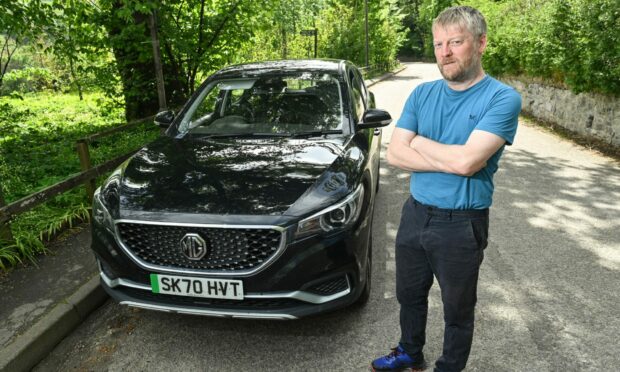
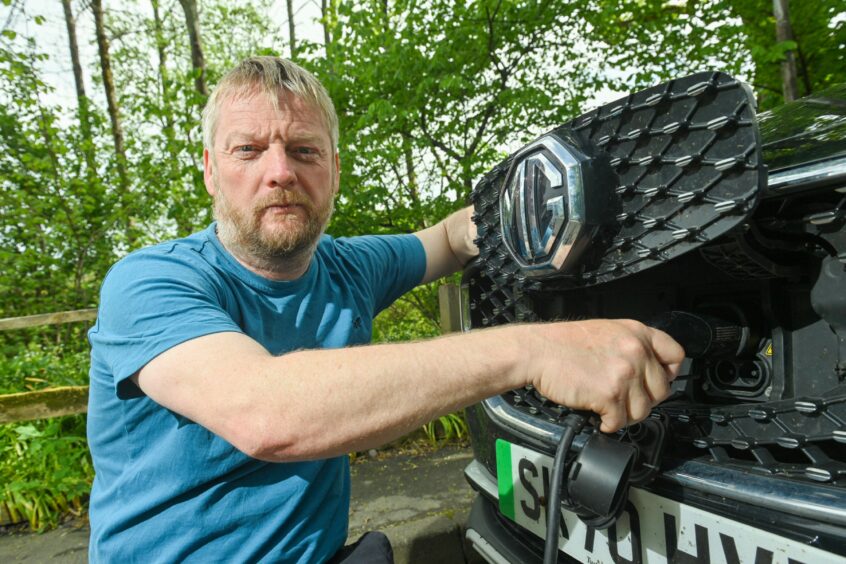
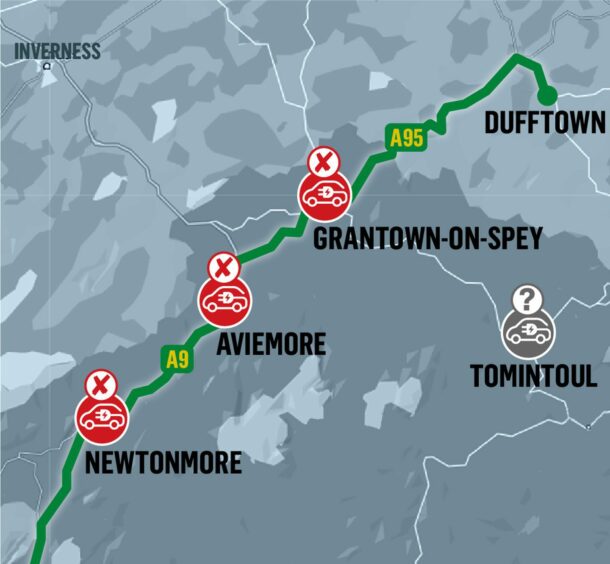
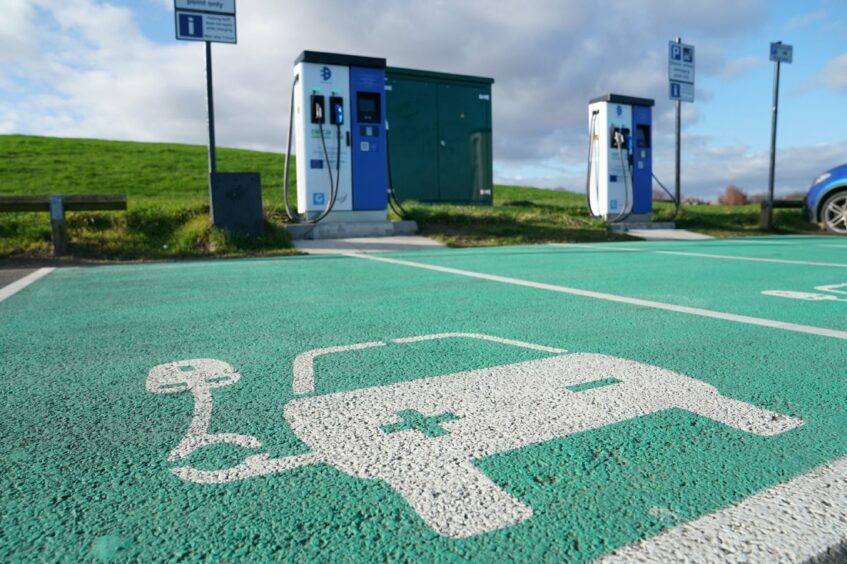
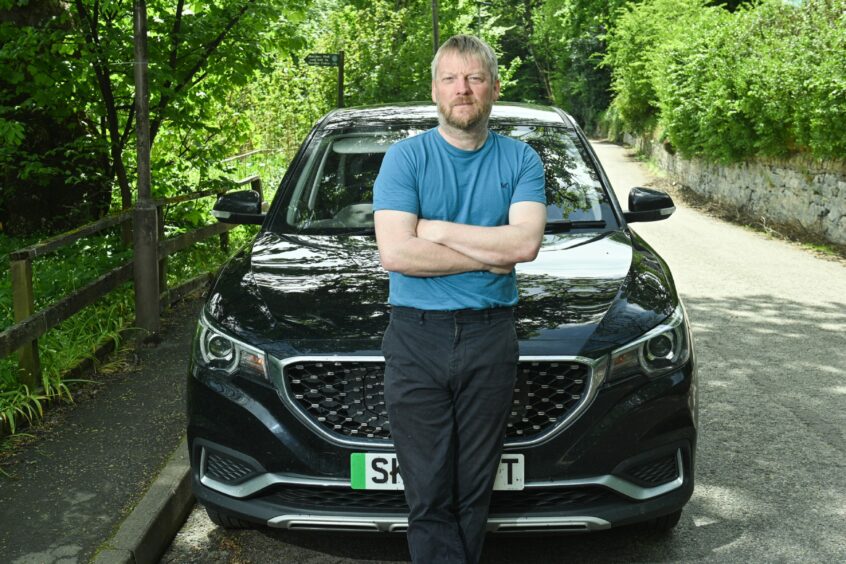
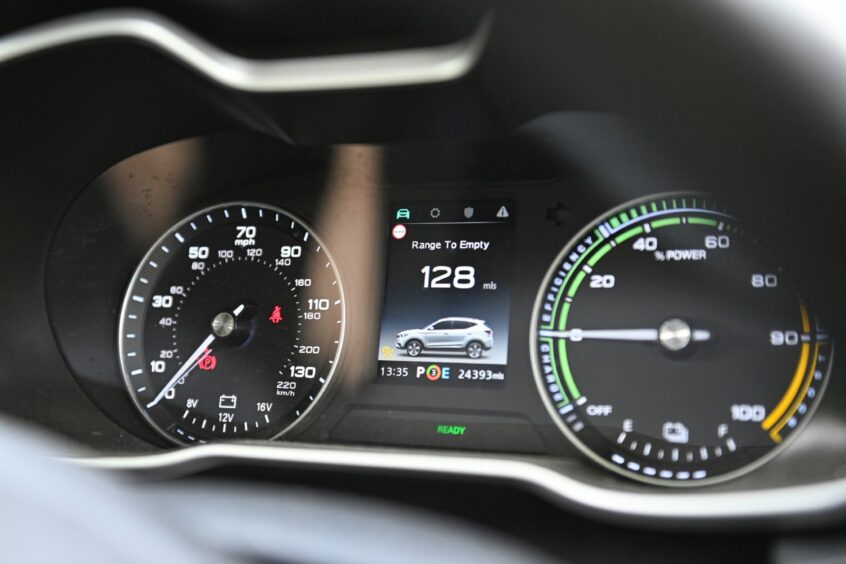
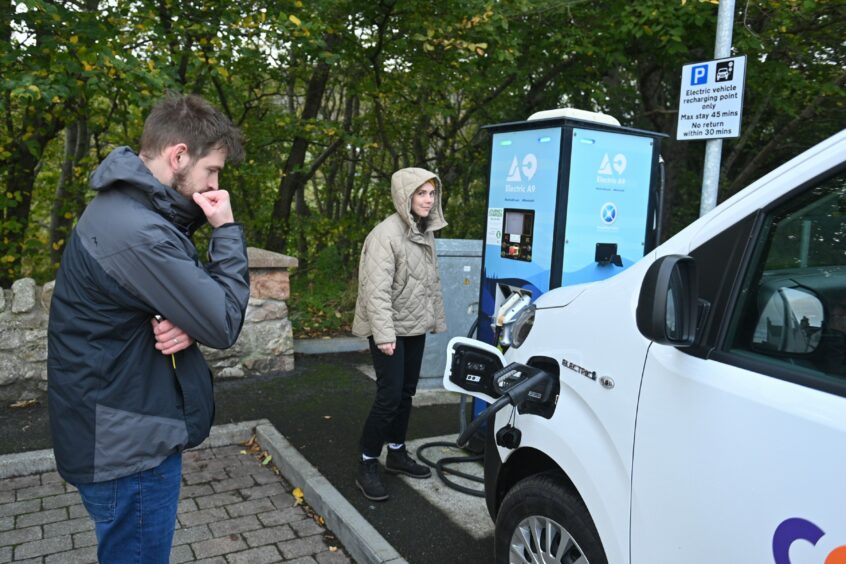
Conversation